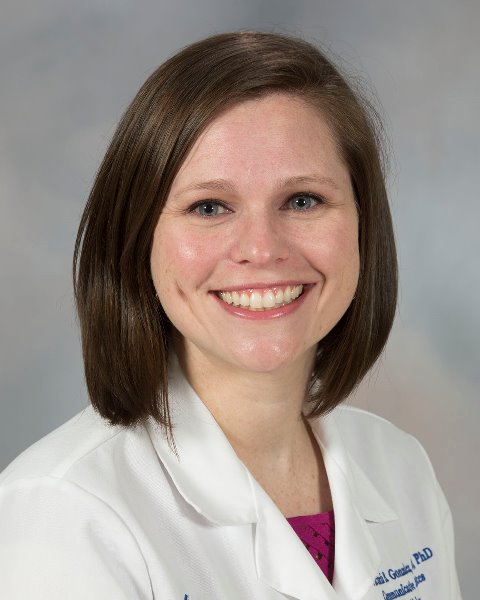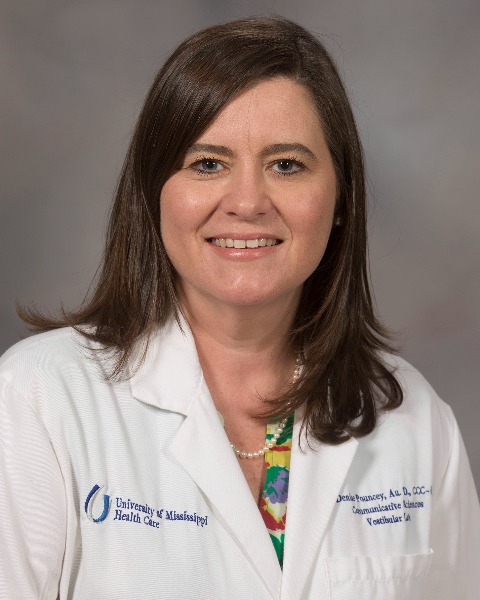Practice Management (PM)
MM306 - Scheduling Errors Have You Blue? Let’s Fix the Queue! Quantifying Effort in Achieving Capacity Planning Goals

Victoria Gonzalez, AuD, PhD
Chief, Division of Audiology
University of Mississippi Medical Center
Department of Otolaryngology - Head and Neck Surgery
Jackson, MississippiDisclosure(s): No financial or nonfinancial relationships to disclose.
.jpg)
Mary Gunn Prewitt, AuD
Associate Professor, Pediatric Audiologist
University of Mississippi Medical Center
UMMCDisclosure(s): No financial or nonfinancial relationships to disclose.

Denise Pouncey, AuD
Associate Professor, Audiologist
University of Mississippi Medical Center
University of Mississippi Medical Center
Brandon, MississippiDisclosure(s): No financial or nonfinancial relationships to disclose.
Lead Presenter(s)
Contributor(s)
Audiology practices often live within Departments of Otolaryngology that face growing pressure to optimize operational processes to enhance patient satisfaction, widen access, increase revenue, and reduce inequity. At larger medical centers, individuals involved in strategic and operational planning often do not understand the nuances of an Audiology practice. This module examines the strategies in which our Division of Audiology sought to innovate our capacity management to address growing scheduling concerns in an attempt to improve the patient experience while adding value to the role of an audiologist in administrative activities and increasing provider satisfaction.
Summary:
Capacity management in healthcare strives to optimize the use of internal resources to meet the growing demand for services. Strategies used in capacity planning evaluate the efficiency of the workforce (who), the equipment (what), and the facility (where; Smith-Daniels et al., 1988). Capacity issues in outpatient clinics are largely intertwined with scheduling problems (Youn et al., 2022). Addressing scheduling concerns which are operational often allow for optimization of capacity decisions which are strategic.
Our Division of Audiology sought to innovate our capacity management with the goals of enhancing patient and provider satisfaction, widening access, increasing revenue, and reducing inequity. Breaking down all our resources highlighted escalating issues in our scheduling processes. These processes were controlled by administrative leadership that did not understand the nuances of an Audiology practice. External attempts to fix the growing problems became chronically ineffective.
This module seeks to outline the scheduling problems and the strategies implemented to not only significantly reduce the issues but also make substantial gains in achieving our capacity management goals. Our audiologists were used for activities that are traditionally assigned to support staff without decreasing clinical productivity. Specifically, two audiologists were assigned to review all audiology referrals. Referrals received range in patient age from birth to 99+ with request for services that span the audiology scope of practice. We quantified our efforts into three categories: provider, patient, and budget.
The provider category will examine both the outcomes directly associated with the audiologists involved in schedule planning, as well evaluating provider satisfaction among all audiologists in the division. First, metrics were established to quantify improvements that justified provider time and elevate clinical service criteria toward benchmarks in faculty rank. Second, division audiologists will be anonymously surveyed using a 5-point Likert scale to determine provider satisfaction and assess whether improvements were perceived as a result of the audiologist referral review.
The patient experience will assess the quality of the care coordination, decreased scheduling errors, and decreased duration between referral receipt and scheduling the appointment. We strived to widen access before the patient walked in the door. Outcomes towards improving the patient experience also addressed inequities in access to audiology services for the rural and low socioeconomic populations we serve. Often these referrals were dismissed due to invalid contact information based on the duration in which attempts were made to contact a patient or as a result of incomplete referrals.
Lastly, we will review how greater efficiency in our scheduling processes maximized completed appointments for all providers and reduced errors, which yielded increased revenue. Monthly budget targets were met within three months of implementing scheduling workflow changes and remain met or exceeded.
The value of the audiologist in a Department of Otolaryngology goes beyond clinical service. Evaluating strategies to quantify administrative efforts outside of patient facing appointments has allowed for opportunities to increase flexibility and provider satisfaction while improving patient outcomes and maintaining budget targets.
Learning Objectives:
- define capacity management.
- list a strategy to improving capacity management in an audiology clinic.
- identify 3 barriers that result in scheduling errors.
